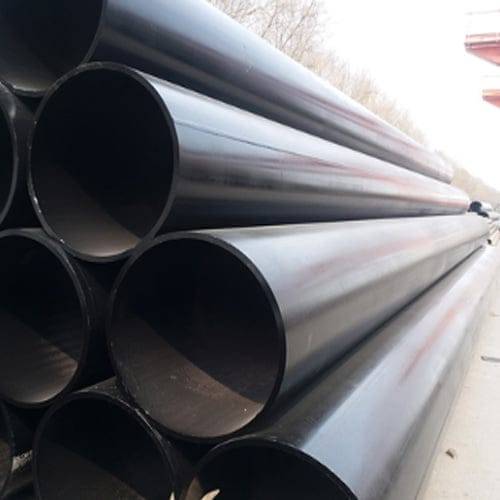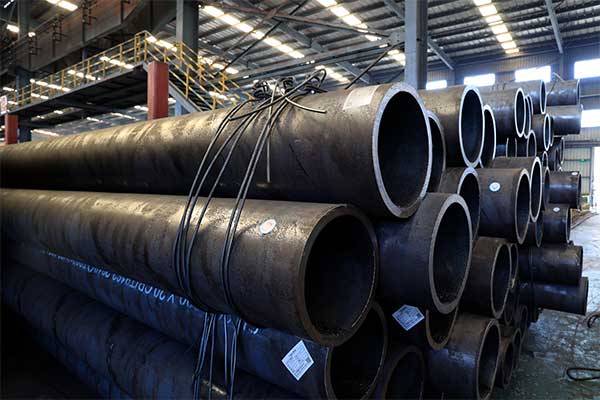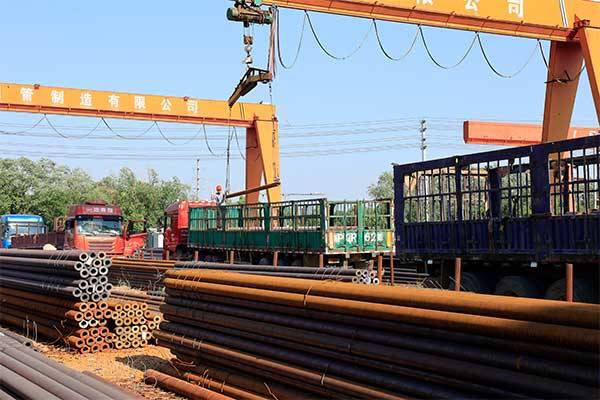Introduction
Structural steel pipes are fundamental components in construction and various industrial applications. Their versatility, strength, and availability in different sizes make them indispensable for many projects. This comprehensive guide will delve into the world of structural steel pipe sizes, discussing their importance, applications, and how to select the appropriate size for your needs. By the end of this guide, you will have a thorough understanding of structural steel pipe sizes and their role in your projects.
The Importance of Structural Steel Pipe Sizes

Structural steel pipe sizes play a crucial role in determining the strength, load-bearing capacity, and suitability of the pipes for various applications. The right size ensures that the pipes can handle the required load and stress without compromising structural integrity. Let’s explore why choosing the correct structural steel pipe size is essential.
Load-Bearing Capacity
The size of a structural steel pipe directly influences its load-bearing capacity. Larger diameters and thicker walls can support more weight and stress, making them suitable for heavy-duty applications such as bridges, high-rise buildings, and industrial frameworks. On the other hand, smaller sizes are ideal for lighter structures where excessive strength is not required.
Versatility and Flexibility
Different projects require different pipe sizes to meet specific design and engineering requirements. Structural steel pipes come in various sizes, allowing engineers and architects to select the best fit for their projects. This flexibility ensures that the pipes can be used in diverse applications, from residential buildings to large-scale industrial constructions.
Cost-Effectiveness
Choosing the appropriate structural steel pipe size can lead to significant cost savings. Using pipes that are too large can result in unnecessary expenses, while pipes that are too small may not provide the required strength, leading to potential failures and costly repairs. Therefore, selecting the right size is crucial for optimizing costs without compromising quality and safety.
Common Structural Steel Pipe Sizes and Their Applications
Structural steel pipes come in a wide range of sizes, each suited for specific applications. Here, we will discuss some of the most common structural steel pipe sizes and their typical uses.
Small-Diameter Pipes (1/2 inch to 4 inches)
Small-diameter pipes are commonly used in residential and light commercial applications. They are ideal for plumbing, heating systems, and structural supports in small-scale construction projects. These pipes provide adequate strength for low-stress applications while being cost-effective and easy to handle.
Medium-Diameter Pipes (5 inches to 12 inches)
Medium-diameter pipes are often used in commercial and industrial applications. They are suitable for structural supports, columns, and frameworks in medium-sized buildings and industrial facilities. These pipes offer a good balance between strength and versatility, making them a popular choice for various construction projects.
Large-Diameter Pipes (14 inches and above)
Large-diameter pipes are essential for heavy-duty applications that require significant load-bearing capacity. They are used in bridges, high-rise buildings, and large industrial structures where maximum strength and durability are critical. These pipes can withstand substantial stress and provide the necessary support for massive constructions.
Table: Common Structural Steel Pipe Sizes and Applications
| Pipe Size (inches) | Outer Diameter (inches) | Wall Thickness (inches) | Typical Applications |
|---|---|---|---|
| 1/2 | 0.84 | 0.109 | Residential plumbing, heating systems |
| 3/4 | 1.05 | 0.113 | Residential plumbing, light structural supports |
| 1 | 1.315 | 0.133 | Light commercial plumbing, small structural supports |
| 2 | 2.375 | 0.154 | Medium-sized commercial plumbing, structural supports |
| 4 | 4.5 | 0.237 | Industrial plumbing, structural columns |
| 6 | 6.625 | 0.280 | Structural supports in commercial and industrial buildings |
| 8 | 8.625 | 0.322 | Heavy structural supports, industrial frameworks |
| 10 | 10.75 | 0.365 | Bridges, large industrial structures |
| 12 | 12.75 | 0.406 | High-rise buildings, heavy-duty industrial applications |
| 14+ | 14+ | 0.500+ | Bridges, skyscrapers, massive industrial constructions |
Factors to Consider When Choosing Structural Steel Pipe Sizes
Selecting the right structural steel pipe size involves considering several factors to ensure optimal performance and safety. Here are the key factors to keep in mind:
Load Requirements
Understanding the load requirements of your project is crucial. Calculate the maximum weight and stress the pipes will need to support and choose a size that can handle these demands without deformation or failure.
Environmental Conditions
Consider the environmental conditions where the pipes will be used. Factors such as temperature fluctuations, exposure to corrosive substances, and moisture levels can affect the performance of the pipes. Choose a size and material that can withstand these conditions.
Regulatory Standards
Ensure that the selected pipe sizes comply with local and international regulatory standards. Adhering to these standards guarantees that the pipes meet safety and quality requirements, reducing the risk of structural failures.
Cost Considerations
While it’s essential to choose pipes that meet your project’s technical requirements, cost considerations should also be taken into account. Compare prices of different pipe sizes and select the most cost-effective option that doesn’t compromise on quality and safety.
Advantages of Using Structural Steel Pipes

Structural steel pipes offer numerous advantages that make them a preferred choice in construction and industrial applications. Here are some key benefits:
Strength and Durability
Structural steel pipes are known for their exceptional strength and durability. They can withstand significant loads and stresses, making them suitable for heavy-duty applications.
Versatility
The wide range of available sizes and shapes makes structural steel pipes highly versatile. They can be used in various applications, from residential plumbing to large-scale industrial constructions.
Cost-Effectiveness
Structural steel pipes are cost-effective due to their long lifespan and low maintenance requirements. Their durability reduces the need for frequent replacements, resulting in long-term cost savings.
Recyclability
Steel is one of the most recycled materials globally, and structural steel pipes are no exception. Using recycled steel pipes contributes to environmental sustainability and reduces the carbon footprint of construction projects.
Conclusion
Understanding the different structural steel pipe sizes and their applications is crucial for selecting the right materials for your projects. The correct size ensures optimal performance, cost-effectiveness, and safety. From small-diameter pipes for residential use to large-diameter pipes for heavy-duty industrial applications, structural steel pipes offer versatility and strength that make them indispensable in construction and industry.
By considering factors such as load requirements, environmental conditions, regulatory standards, and cost considerations, you can make informed decisions when choosing structural steel pipe sizes. Remember to always consult with engineering professionals to ensure that the selected sizes meet your project’s specific needs and standards.
FAQ
What are the most common sizes of structural steel pipes used in construction?
The most common sizes of structural steel pipes used in construction range from 1/2 inch to 12 inches in diameter. Small-diameter pipes are typically used in residential applications, while medium to large-diameter pipes are used in commercial and industrial constructions.
How do I determine the appropriate structural steel pipe size for my project?
To determine the appropriate structural steel pipe size for your project, you need to consider factors such as load requirements, environmental conditions, and regulatory standards. Consulting with an engineer or a professional in the field can help ensure that you select the correct size for your specific application.
Can structural steel pipes be used in corrosive environments?
While structural steel pipes have some level of corrosion resistance, they may not be suitable for highly corrosive environments without additional protection. Coatings, galvanization, or using stainless steel alternatives can enhance corrosion resistance for such applications.
What is the standard wall thickness for structural steel pipes?
The standard wall thickness for structural steel pipes varies depending on the pipe size and application. Common wall thicknesses range from 0.109 inches for smaller pipes to over 0.500 inches for larger pipes used in heavy-duty applications.
Are structural steel pipes recyclable?
Yes, structural steel pipes are highly recyclable. Steel is one of the most recycled materials globally, and using recycled steel pipes contributes to environmental sustainability by reducing the need for new raw materials and lowering the carbon footprint of construction projects.




